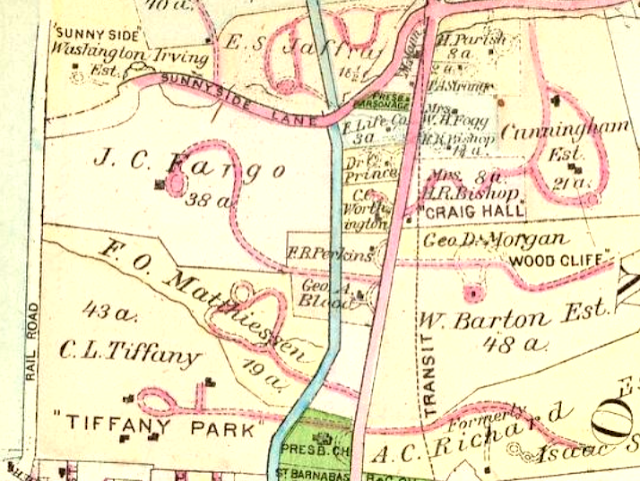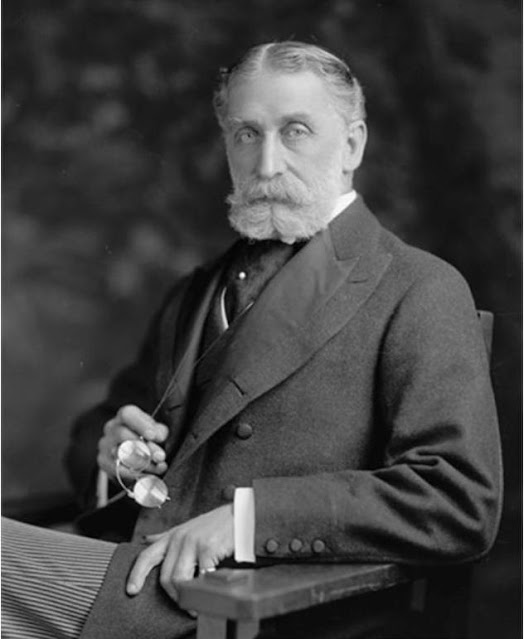Lindenholm: Its heart and soul survived into the 1990s
An extensive estate at the northern edge of Irvington's Hudson River shore was originally part of the farm of the descendants of 1650 Dutch colonial settler Stephen Ecker on the Philipsburg Manor estate and later became home to Columbia University professor and two-time acting president Rev. Dr. John McVickar, an ordained Episcopal minister.
The site of the estate that would be best known as Lindenholm in the 20th century was on the river abutting West Sunnyside Lane adjacent to author Washington Irving's Sunnyside estate. In fact, it was McVickar's friendship with Irving — namesake of the Village of Irvington — that brought McVickar north to the village until his death in 1868.
McVickar also owned land off North Broadway near Main Street which in 1852 he would develop and build what became St. Barnabas Episcopal Church and its nearby parsonage, the McVickar House near the top of Main Street that houses the Irvington Historical Society today.
McVickar's son, the Rev. William A. McVickar, became St. Barnabas' first rector and lived in that Main Street parsonage.
Irving was one of the original benefactors of that church project.
James Congdell Strong Fargo (1829-1915) — he went by “J.C.” — purchased the estate from McVickar's heirs after McVickar's death, between 1868 and 1871. Fargo was president of the American Express Company for 33 years until his retirement at age 85 in 1914. He retired after a 70-year career at the company, but remained on its board of directors until his death in 1915. Fargo was the younger brother of American Express and Wells Fargo & Company co-founder William George Fargo.
James Congdell Strong Fargo (1829-1915) — he went by “J.C.” — purchased the estate from McVickar's heirs after McVickar's death, between 1868 and 1871. Fargo was president of the American Express Company for 33 years until his retirement at age 85 in 1914. He retired after a 70-year career at the company, but remained on its board of directors until his death in 1915. Fargo was the younger brother of American Express and Wells Fargo & Company co-founder William George Fargo.
 |
| James Congdell Fargo is shown in a 1902 photo from The New York Genealogical and Biological Record, July 1915 edition. (Photo provided by Wells Fargo & Co. Corporate Historian Alyssa Bentz) |
Unlike his older brother, J.C. Fargo kept a low profile. He owned a brownstone at 122 W. 37th St. in Manhattan which he rented out after moving to 56 Park Avenue between West 37th and 38th streets where he died and his 38-acre Irvington estate which abutted the southern side of West Sunnyside Lane and the Irving estate, ran as far east as the Old Croton Aqueduct and abutted the neighboring Matthiessen estate to the south.
The main house on the estate reportedly dated to 1779 according to later owners.
How private was Fargo? Search online for his name and you’ll find many references to older brother William, including of William’s estate in Buffalo, N.Y., where he served as mayor, and personal photos of William as well. J.C.? Not a portrait, not a photo, no references to his Irvington estate, let alone photos of it.
Yet J.C. had a major impact on U.S. finance. He was the man behind the creation of Travelers Cheques in 1891, asking an American Express colleague in the finance department to come up with a better alternative to letters of credit to access cash while traveling.
Some may remember the 1970s-1990s TV ad tagline uttered by Oscar-winning actor Karl Malden: “American Express Travelers Checks. Don’t leave home without them.”
Nine years earlier, Fargo was behind the creation of the money order as well.
Fargo had briefly rented the nearby estate of late Irving neighbor Moses H. Grinnell before moving to what became Lindenholm, living the life of the gentleman farmer for years.
From ads posted at the time, we know that Fargo raised registered Jersey dairy cows on the estate that were famed for the high butterfat content of their milk and the main house was on a cul-de-sac off Fargo Lane.
By 1911 — Fargo died in Manhattan in 1915 — his former estate had long been divided into three separate estates, running east from the Hudson River to Broadway, respectively occupied by attorney Frank E. Randall, financier Isaac Newton Seligman and engineer, inventor and golf entrepreneur Charles Campbell Worthington and wife Julia Hedden. Julia kept the estate after she and Charles divorced sometime between 1900 and 1905. Julia died in 1912. Charles remarried in 1906.
The Worthingtons’ estate was called “Rossiter,” the middle name of Charles’ father, Henry Rossiter Worthington, who created much of the family’s wealth.
H.R. Worthington himself had an estate just west of Broadway north of Sunnyside Lane which is the site of today’s "Belvedere."
I.N. Seligman’s estate was purchased after his death in 1917 by Leslie R. Palmer, president of the First National Bank of Yonkers.
Seligman was a member of a large family of immigrants from Bavaria who started the J.W. Seligman Co. investment firm in 1864 after raking in cash from the sale of Union Army uniforms to the federal government during the Civil War.
Their firm’s investments included railroads and the Seligmans were heavily involved in the rail ventures of magnate and neighbor Jay Gould, whose nearby Lyndhurst estate lay just north up Broadway, and later with American Express.
I.N. Seligman, a renowned horseman, died a remarkable death in 1917. He was riding his horse south on North Broadway as part of a regular early morning exercise routine when the horse threw and fatally injured him at 7:30 on a Sunday morning across the street from Irvington's Presbyterian Church. He died of a fractured skull that afternoon.
Seligman owned a more extensive estate on the Tarrytown side of West Sunnyside Lane called Willowbrook, now known as Shadowbrook. The Seligman family lived in the 27-room Willbrook mansion. The portion that was previously part of the Fargo estate was used as a farm by the family.
The fabulously wealthy Seligman left an estate valued at between $15 million and $20 million — $300 million to $400 million today.
Randall purchased his 14-acre estate in 1911 (he died in 1915) and named it “Lindenholm.” His heirs lived on the estate until 1989 when Katharine Patteson Randall, widow of Randall's son Paul King Randall, died. Mrs. Randall's heirs put the estate up for sale in 1990 and the property was divided and luxury single-family homes on large plots of land developed on it.
 |
This hand-drawn 1914 map shows several estates on the site of the old James C. Fargo estate. Lawyer Frank E. Randall, whose main house — shown in red off a circular drive — was the main house of the Fargo estate and is believed to have been built as early as 1779. It was Randall who named the estate Lindenholm. East of Randall's estate is that of financier Isaac Newton Seligman and above that the Rossiter estate of Julia Hedden Worthington, who took over the estate after she and engineer husband Charles Campbell Worthington divorced around the turn of the 20th century. (G.W. Bromley & Co., 1914. David Rumsey Map Collection)* Click here for links to dozens of other Gilded Age stories by this author |













Do you have any photographs of the Barney estate, pictures of the east side of Cosmo bldg and adjacient property (not of the West side of the bldg? I'm also looking for pictures of the Barney Park development prior to 1929. Thanks, Cathy Sears
ReplyDeleteBetween any stories/photos posted to this blog and my Facebook post, I used all the photos I had, I believe. Sorry I can't be of more help, Cathy
Delete